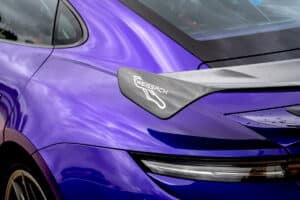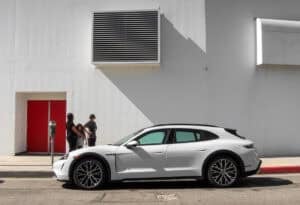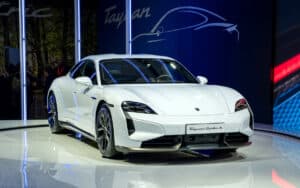Pro: Smooth, continuous rush of power controlled by the sophisticated stability control system.
Con: A windshield defrost that is either off or blows hot and loud. It was about the only fault I could find.
KITTILA, FINLAND—When Porsche unveiled the jaw-dropping Taycan Turbo and Turbo S all-electric sports cars in November, there was little doubt that every sports car aficionado would want to own one. The only barrier was the price—$150,900 for the Taycan Turbo and $185,000 in the US, and $173,900 and $213,900, respectively, in Canada.
Quick price comparison:
| Model | US Price | Canada Price |
|---|---|---|
| 2020 Taycan 4S | 103,900 | $119,400 |
| 2020 Taycan Turbo | $150,900 | $173,900 |
| 2020 Taycan S | $185,000 | $213,900 |
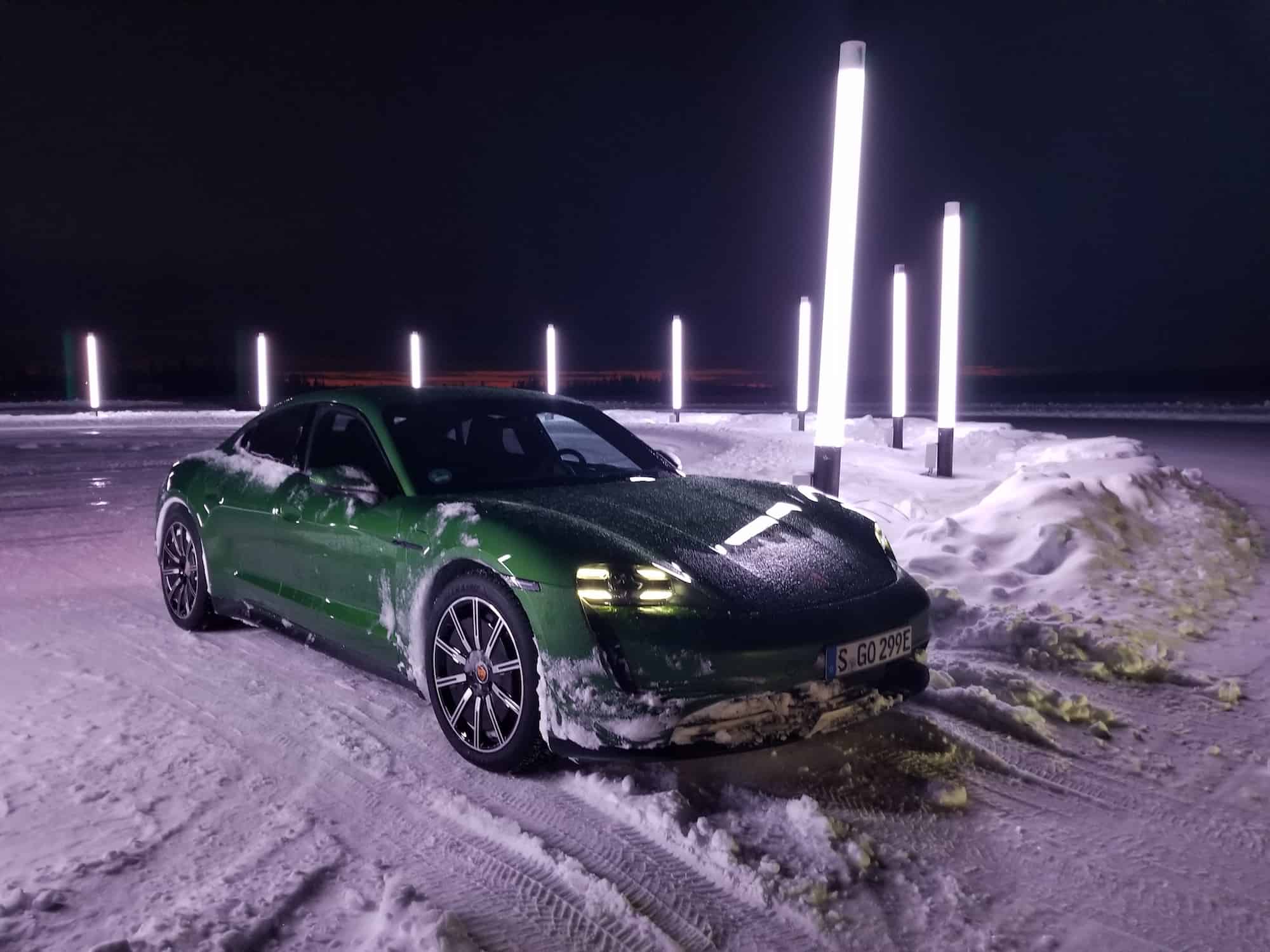
Not to fear—the company has followed those halo vehicles with the “working man’s” version: the Taycan 4S. OK, its $103,900 price tag ($119,400 in Canada) is still beyond the reach of many working stiffs, but take it from me—it’s well worth remortgaging the house for.
Of its many, many attributes, perhaps the coolest one of all for the Taycan 4S is the fact that it is first, last and always a sports car. The fact that it’s powered by two electric motors (one front and one rear) would hardly be worth a mention if it weren’t for how that powertrain affects the vehicle’s overall performance (more on that later).
Taycan 4S vs Turbo and Turbo S
With the 4S, there are a few less niceties than the premium models: for example, the brake rotors are cast iron rather than ceramic and the batteries are lower capacity. It also achieves 100 km/h in 4.0 seconds, compared to the Turbo S’s rather mind-blowing 2.8 seconds. The top speed on all models is rated at 250 km/h. But beyond those and a number of relatively minor esthetic details, this is still essentially the same car.
Taycan EV Power: 0-60 in Under 4 Seconds

- Powertrain: Dual electric motors (all-wheel drive)
- Horsepower: 429 hp (standard battery) / 482 hp (Performance Battery Plus)
- Torque: 472 lb-ft (standard battery) / 479 lb-ft (Performance Battery Plus)
- 0-60 mph: 3.8 seconds with Launch Control
- Top Speed: 155 mph (250 km/h)
The 4S is a four-seat, four-door sports sedan. It comes with a standard 79.2-kilowatt-hour, 554-kilogram lithium-ion Performance Battery, which delivers a maximum range of 407 km. For an extra $7,500, buyers can upgrade to a 92.3-kilowatt-hour, 630-kilogram Performance Battery Plus which stretches the range to 463 km.
The overwhelming impression is not that this is a great EV sports car, but that is a great sports car – regardless of how it is powered.
The entry-level battery delivers 429 horsepower and 472 lb.-ft. of torque; the bigger battery raises those numbers to 482 hp and 479 lb.-ft. There’s also a feature called Launch Control that delivers a brief burst of even more power. The top speed for both is rated at 250 km/h. The Turbo S, by comparison, delivers 626 horsepower.
The 4S has a truly nifty innovation, designed specifically for cold climates, like ours – a battery “conditioner”. The device works as a heater when the battery is cold and cooler when the car is being pushed hard. There’s even an optional system to capture excess battery heat for the cabin. The cooling reduces battery fade, which enables the car to do quarter-mile after quarter-mile virtually all day long.
New Taycan Charging and Range Expectations
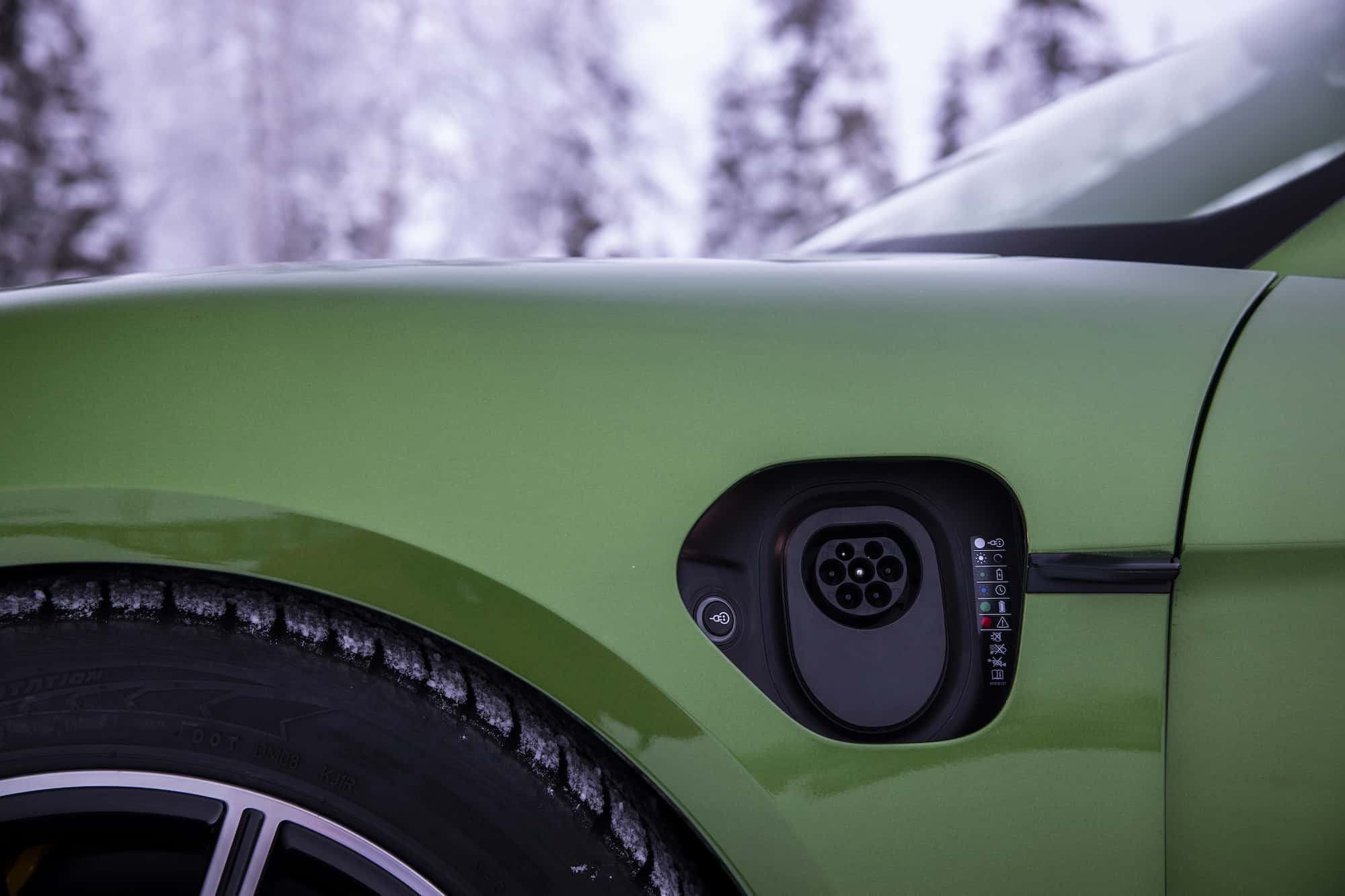
- Range: 199 miles with the standard battery, 227 miles with the Performance Battery Plus.
- Battery Capacity: 79.2 kWh (standard) / 93.4 kWh (Performance Plus).
- Charging At Home: Battery preconditioning with a heater before departure.
- Charging On the Road: Optimized battery heating as you approach a charging station.
- Fast Charging: 5% to 80% charge in 22.5 minutes using Porsche’s 800-volt chargers; compatible with standard 480-volt DC fast chargers.
When your car is plugged in at home overnight, a timer switches on a battery heater to warm the unit before you leave. If you’re on the road and planning to stop somewhere for a charge, you can tell the system to optimize the battery as you approach the charging station.
Under ideal conditions with Porsche’s own 800-volt chargers, the company claims a car can go from a five per cent to 80 per cent charge in 22.5 minutes. The Taycan’s charging port also works with the standard 480-volt DC fast chargers common across the country.
Editor’s Note: The Taycan has recently been criticized for its lack of charging abilities compared to the competition—in particular, the Tesla S. Here’s more on the Taycan’s charging comparison at Clean Technica.
Exterior & Interior: Panamera design lines and clean cabin layout
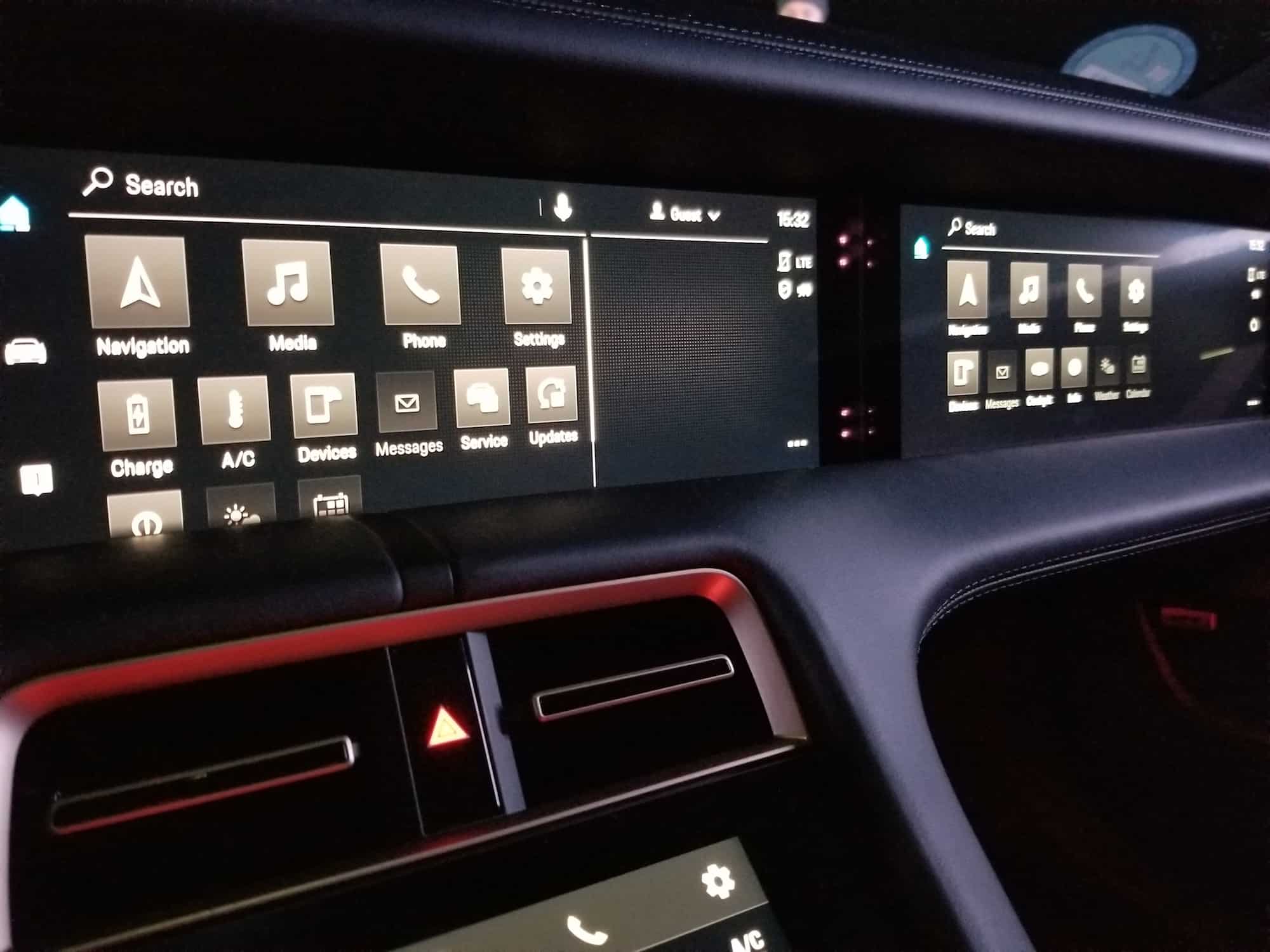
This four-door, four-passenger Porsche has a look evocative of the Panamera, but with shallow hood lines and improved aerodynamics. Four LED daytime running lights at the front are encased in short and wide rectangular headlamp units that subtly update the look, while continuous LED lights wrap around the rear fenders. The overall effect is a handsome car that remains unmistakably Porsche.
That aerodynamic shape, however, cuts into cargo space, leaving just 81 litres of front storage and a quite modest 407 litres in the rear.
The interior includes a modern yet simple digital dash layout that pays homage to the original 911 of 1963. It has a freestanding 16.8-inch curved instrument cluster placed high enough to eliminate the need for a heads-up display. The uncluttered layout adds to the sense of minimalism that accentuates the quality feel of the interior. The leather seats are as firm as you’d expect from a German sports car—which is to say, this is not meant for cross-country road trips.
There are tons of little unicorns, like front foot wells gently lit at night with a red glow.
The Taycan 4S executes a simple and minimalist modern digital dash layout with round gauges that harken back to the analogue era. The seats are covered in leather or “vegan” synthetics and can be customized further to buyers’ tastes.
Taycan 4S Performance and Handling: Built for the colder climates
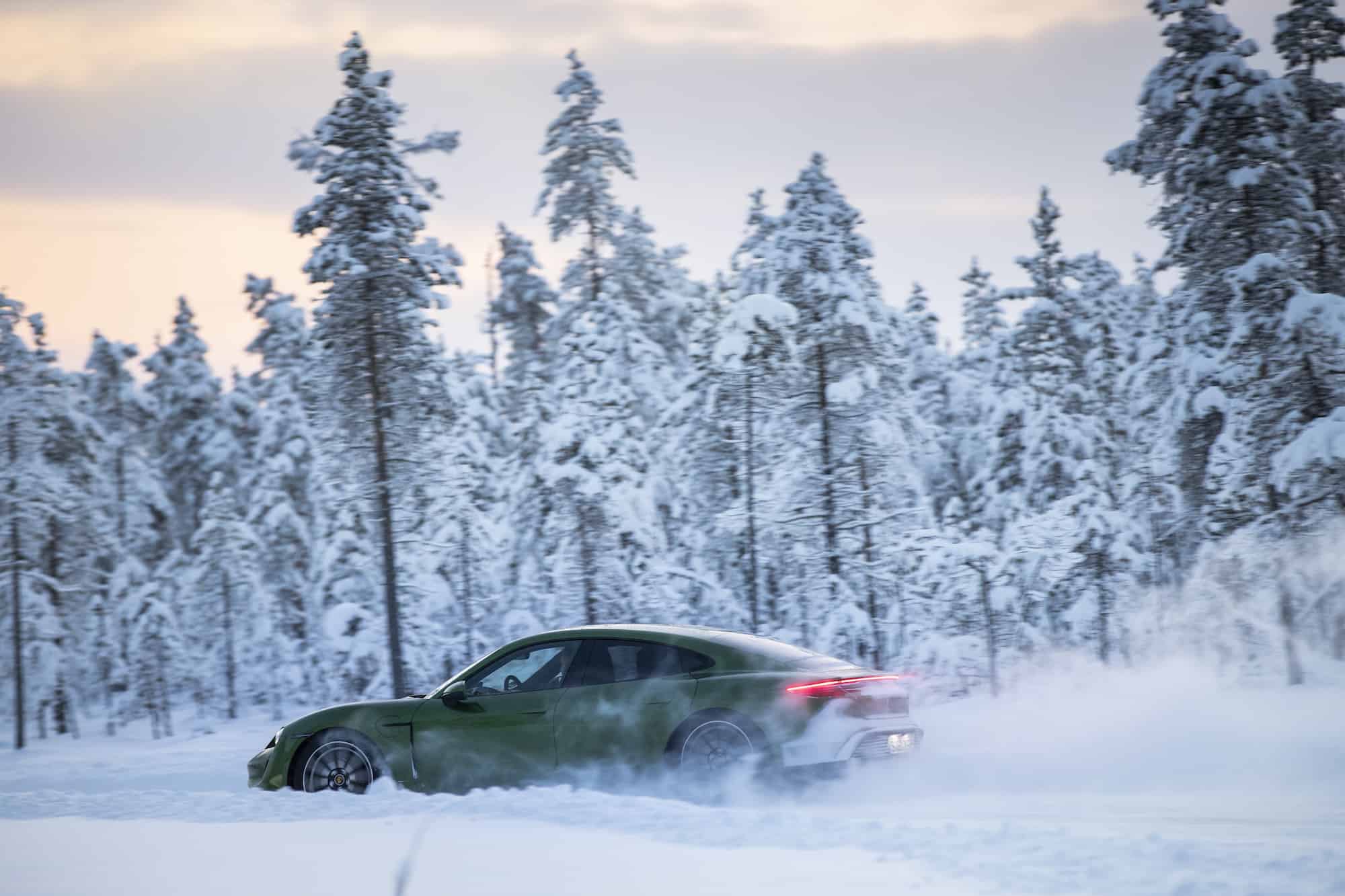
With a curb weight between 2,140 and 2,220 kilos, depending on battery choice, the Taycan 4S is heavy for a sports car. Yet its low stance of just 1,379 mm and its low-mounted battery pack makes it feel lighter than its actual weight.
As with all good EVs, the acceleration is instantaneous and continues in one long neck-snapping rush right up to its maximum speed.
The Porsche has been compared to the Tesla Model S, and the performance (and price) numbers are remarkably similar. The difference, however, is that the Tesla is a sporty sedan, while the Porsche is unapologetically a sports car.
Porsche uses the best of safety and control technology in a way that enhances, rather than replaces, the driving experience. Its adaptive air suspension includes an adaptive damper control, known as PASM (Porsche Active Suspension Management). Another system, PSM (Porsche Stability Management) keeps the car on an even keel at any speed. Traction control is so seamless, you could convince yourself that you are doing all the work – until you switch it off.
Those two electric motors mentioned above are tied to an AWD system that continuously adjusts the amount of power going to the front and rear wheels, based on such things as driver behaviour and road conditions. There is a digital display on the dash that shows you which wheels are doing the work.
The result is a car that just refuses to skid out of control, unless you force it to. Of the four driving modes (range, normal, sport, sport plus), it is sport plus that puts the car at the mercy of the driver’s skills.
Takeaway
The overwhelming impression is not that this is a great EV sports car, but that is a great sports car – regardless of how it is powered.
The Porsche has been compared to the Tesla Model S, and the performance (and price) numbers are remarkably similar. The difference, however, is that the Tesla is a sporty sedan, while the Porsche is unapologetically a sports car.
It looks and handles like a Porsche. It has the soul of a Porsche. It feels like a car that has made almost no compromises on the road to incorporating EV technology. In fact, Porsche engineers have found ways to optimize the benefits of the electric motors.
You can buy and claim you are doing something good for the planet by reducing carbon dioxide emissions. But the real reason to own this amazing car is that there’s nothing else quite like it on the road.
The 2020 Porsche Taycan 4S orders are open now with North American deliveries next year (spring in the US, summer in Canada).



